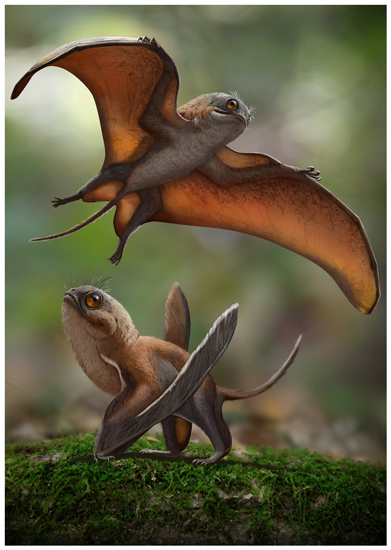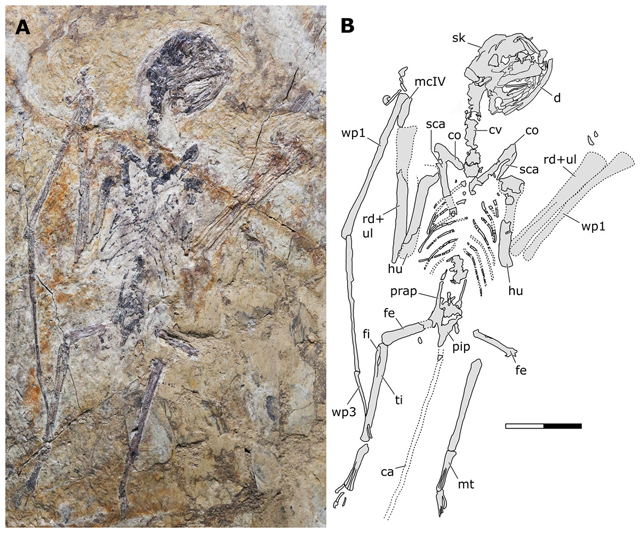Researchers have published a description of a new species of anurognathid pterosaur from the Tiaojishan Formation in Hebei Province China. The diminutive flying reptile has been named Sinomacrops bondei and is the third anurognathid species to have been described from Jurassic-aged rocks found in China. Although the specimen is badly crushed, it represents the near complete skeleton of a single individual and as such it has helped palaeontologists to better understand the phylogeny of these enigmatic, but poorly known, wide-mouthed pterosaurs.

The Amazing Anurognathidae
Palaeontologists that focus on the Pterosauria have long speculated as to where in the flying reptile family tree the Anurognathidae fit. Very few fossils are known and those that have been made available to study demonstrate a mix of basal as well as more derived traits. All the anurognathids described to date are estimated to have had wingspans less than 90 cm. Their fossils are associated with terrestrial environments and it has been suggested that these little flying reptiles lived in forests and ate insects, perhaps capturing them on the wing.
Sinomacrops bondei
The genus name translates from the Greek for Chinese, large eyes/face. The specimen (number JZMP-2107500095) is the first record of an anurognathid pterosaur skull preserved in a mostly lateral view. The species epithet honours the Danish palaeontologist Niels Bonde in recognition of his many years contributing to vertebrate palaeontology.

A Crushed Skeleton
Although the skeleton is badly crushed, the fossilised remains which herald from the Daohugou Beds of the Tiaojishan Formation and are therefore between 164 – 158 million years old (Callovian to the Oxfordian stage of the Middle to Late Jurassic), have provided a new insight into the variation of jaw shape in these wide-mouthed pterosaurs. In addition, the Sinomacrops discovery permitted the researchers to undertake a revision of anurognathid phylogeny and the researchers propose that these strange flying reptiles are a sister group of the Darwinoptera and basal members of the Monofenestrata.
The Monofenestrata
The Monofenestrata comprises a wide range of pterosaur families, broadly grouped together as they had long tails, a lengthy fifth toe and the possession of a single large opening on each side of the skull in front of the eyes. Hence the name Monofenestrata (Latin for “one window”), the merging of the nasal and antorbital openings into a single feature.

The scientific paper: “Sinomacrops bondei, a new anurognathid pterosaur from the Jurassic of China and comments on the group” by Xuefang Wei, Rodrigo Vargas Pêgas, Caizhi Shen, Yanfang Guo, Waisum Ma, Deyu Sun, Xuanyu Zhou published in PeerJ.
The Everything Dinosaur website: Pterosaur Models and Dinosaur Toys.






Leave A Comment